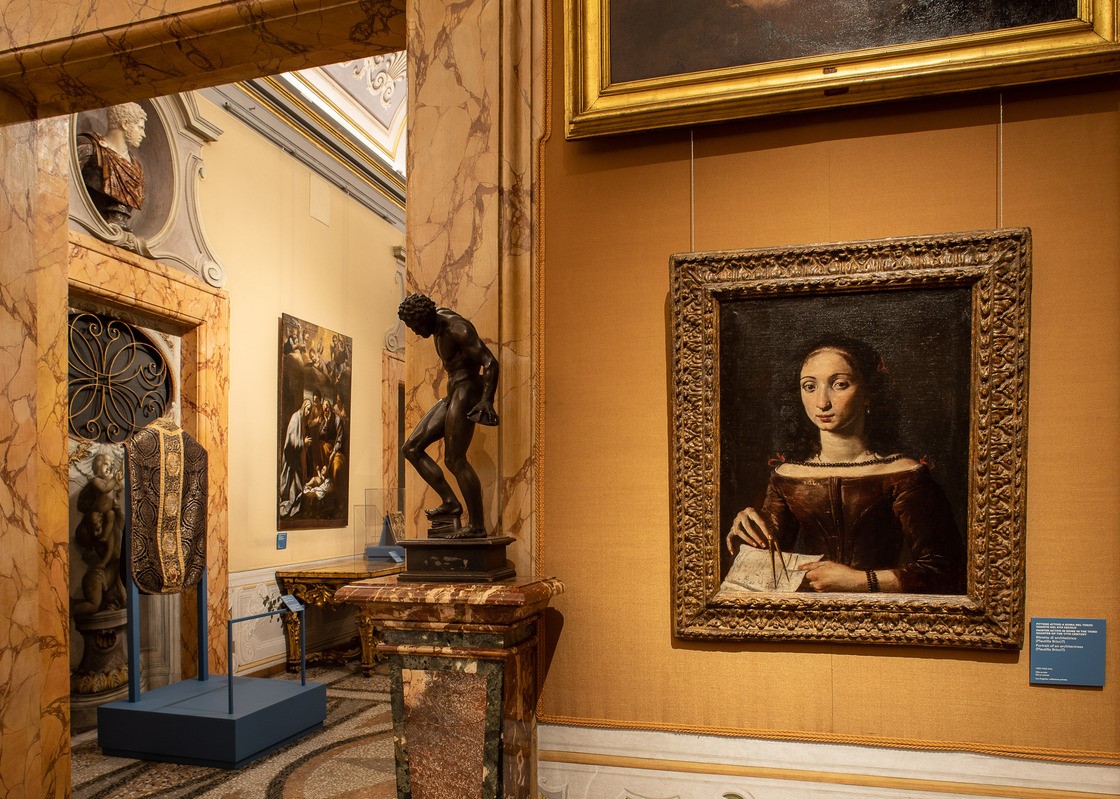
After months of work, Galleria Corsini in Rome reopens to the public with a unique exhibition celebrating a perhaps little-known artist, Plautilla Bricci. A silent revolution: Plautilla Bricci painter and architect, curated by Yuri Primarosa, condenses for the first time the artist's entire graphic and pictorial production.
Daughter of an artist, Plautilla Bricci was born in Rome on August 13, 1616. She was trained in the workshop of her father Giovanni where she acquired not only the rudiments of drawing, but also an art that goes beyond the horizon practiced at the time. Her father, in fact, is not only part of the entourage of Cavalier d'Arpino, but also musician, actor and poet. He is the one who offered Plautilla the first network of contacts and commissions; among the first works made by the artist, the Madonna and Child of Santa Maria in Montesanto (about 1640) with the signature of the young painter on the back, next to the mention of a prodigious event, according to which it would have been the Virgin to finish the work.
Her debut, moreover linked to a "miraculous" event, guaranteed her a place of honor in the production of devotional images. Decisive for Plautilla was her contact with Abbot Elpidio Benedetti, first servant of Cardinal Giulio Mazzarino, then of Jean-Baptiste Colbert, the powerful French Minister of State; the dense tangle of contacts ensured Plautilla Bricci the conception of important decorative devices and the design of illustrious works. The high French dignitary also gave Plautilla Bricci the possibility to establish herself as an architect; an exceptional event for the time, so much so that it required the invention of a new term, "architettrice" (female architect), affixed to a notarial deed to seal the official recognition of someone who had always worked incognito in a world reserved for men.
It was between 1662 and 1663 that the Roman artist began work on her most famous work: the Villa Benedetta outside Porta San Pancrazio, known as the Vascello, destroyed by the French in 1849. And it was here that Plautilla, as an architect capable of directing the workforce, worked alongside artists of the caliber of Bernini and Cortona; a silent revolution undertaken by the artist thanks to the constant protection of her patron. To contribute to the fame of the artist, in addition to the friendship with Benedetti, also the friendship with the Barberini family who assured her of works connected to the French court.
In a triumph of polychrome marbles and colored stuccoes, Plautilla makes manifest her position towards the crown and the papacy in the realization of the chapel dedicated to Saint Louis IX in the church of San Luigi dei Francesi in Rome. It is here, in fact, that the altarpiece depicting the Saint between Faith and History is placed, while with the right hand she holds a scepter and with the left hand the cross. After the death of her brother Basilio, Bricci, by then elderly, enters the Monastery of Santa Margherita in Trastevere, where she meets her death on December 13, 1705.
This is an almost unique figure in the Roman Baroque panorama, a woman who related on an equal footing with architects far more established and up-and-coming than herself, in a cultural climate that nevertheless left room for her talent, making her a leader in the history of architecture.



